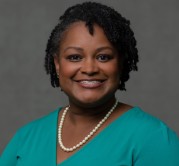Creating real metrics for financial literacy

I am still riding the wave of inspiration cast by this year’s 25th Annual AACUC Conference. Hundreds of credit union professionals all left with a very specific call to action – “What does Legacy mean to you, and how can you advance that definition in the communities we serve.” For me, Legacy means creating educational and generational wealth and leveraging the unique skill of our credit union industry to cultivate the best relationships.
To support intentional relationships, credit unions must improve in their ability to broadcast efforts in support of the business case. Financial education initiatives are more than feel good efforts. Every presentation, simulation, and engagement counts towards tangible change. But, if we’re not measuring it, we can’t prove it. So the question becomes, “How well do you measure impact?”
This year, the SECU Outreach team welcomed the return of many in-person community events. Our statewide network of trained employee presenters and volunteers flexed their cooperative muscles to reach over 58,000 youth and more than 17,000 adults through financial education presentations! Those efforts earned SECU a 1st place award from CUFEN, the Credit Union Financial Education Network, for the number of students reached. CUFEN has been a major contributor to ensuring a platform for standardized reporting of financial education presentations in the United States. The information is used by national and state legislators who lobby for mandated financial literacy programs. Data is used locally by credit union leagues and credit unions to lobby for change, which demonstrates the credit union difference. Not having enough financial education support leaves our classrooms, agencies, and communities vulnerable to financial hardships.
While SECU’s numbers are impressive, there is still work to do to make every number count as an investment in cementing financial freedom for all. There was a time when the engagement was of sole importance. While the quality of engagement should be the number one priority, it can no longer be the only focus. The sustainability of our collective financial education influence on the world must be quantified!
I had the opportunity to discuss these ideas with a colleague who shares a vested interest in collecting meaningful data. Jamie Anderson is the Senior Vice President of Management Analytic Services at SECU. We spoke about the historical default of an operational approach to data collection. “In order to serve our members better, we need to know our members better,” said Anderson. “Tailoring products and services will be a major piece of the puzzle, and data can tell us more about the individuals we are serving, and their potential financial product and services needs.”
The culture at SECU is that our members’ trust is our top priority and to respect their privacy. Today’s consumers are expecting more personalized custom experiences from their credit unions and other businesses they support. It’s important to strike the balance between collecting enough data to support an excellent member experience while respecting and protecting members’ privacy. That also can apply to financial literacy education as well.
Anderson’s team has been tasked with providing Key Success Factor (KSF) scorecards to the SECU Executive Team on a monthly basis. While the overall scores will encompass findings from several operations teams, on the top of that list is how well SECU is doing with financially educating our members. Building better targets for tangible results appropriately guides our efforts and helps us determine if we’re on track. Most recently, we began developing ways to determine successful outcomes in scaling financial literacy programs with an emphasis on financially vulnerable and financially undereducated populations. SECU is working to implement value scoring and Net Promoter Scores (NPS) for workshops through Qualtrics polling in 2024. With more intuitive systems, we can find out more about the audience to tailor to their personal finance growth. Even in its infancy stage, capturing impressions and sentiments can mean major change. This includes tracking of 1:1 financial counseling, workshops, articles, and more.
On the horizon for our team is vetting a new financial education partner and tracking system for community involvement, which we plan to release next year. Along with the tracking tool, we will remind team members of ways to support communities through literature and training. Longer-term, I see the implementation of tracking a member’s progress in an educational workshop provided by branch staff as an attainable goal. After a member completes a class, there are some key questions to ask. Are there any changes in their financial portfolio? Looking 12 to 18 months down the road, does their credit score improve, along with their aptitude to survive a financial hardship? Are they experiencing less frequent NSF charges? Have they increased their regular, timely loan payments? And most importantly – after going through a financial workshop, do they feel more secure in having a trusted relationship with a financial provider? By reporting these findings, we can show the true magnitude of what spreading financial wellness means.
I discussed plans to provide more data with Sheilah Montgomery, CEO of FAMU Federal Credit Union in Florida. Amongst her incredible contributions to the credit union industry, Ms. Sheilah is co-founder of the financial literacy fair hosted by AACUC during the annual conference. Her legacy of improving our members’ financial well-being is inspiring. “Collecting data that helps to sure positive impressions in the lives of students and families is very meaningful work for the credit union industry,” shares Montgomery.
There is purpose behind these statistics and there’s power in showing our members their progress. How do we expect them to make the grade if we’re not showing them their transcript along the way? Credit unions are special. As financial first responders, we have a responsibility to make sure our members know where to turn during financially difficult seasons. To deliver on the People Helping People® promise, we must back it up with data and metrics.
The work of our Outreach team is always evolving because the needs of our communities are ever-growing. It’s of vital importance that we sustain tremendous efforts by showcasing those efforts. We demystify financial literacy by amplifying the true story. Stay vigilant and refreshed in your pursuit of data. Creating real metrics leads to real progress!





